The Expanding Landscape of VR Devices in 2022 and Beyond
The virtual reality (VR) market is predicted to keep expanding at a blistering pace through 2030, at a compound annual growth rate (CAGR) of 45,2%.1 This growth reflects the continued popularity of VR games and entertainment alongside an increasing number of commercial and enterprise applications. Other industries finding use cases for VR include healthcare, manufacturing/industrial, aerospace and military, education, retail, and more.
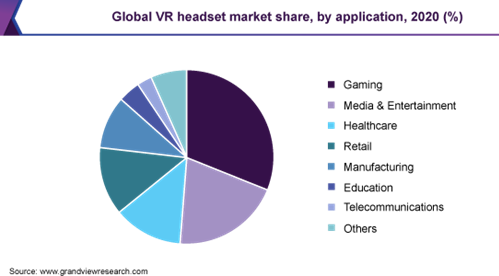
Gaming and entertainment applications account for more than half of VR uses, with healthcare, retail and manufacturing also capturing significant slices of the market. (Image Source)
With the holiday shopping season in full swing, plenty of VR headsets are flying off the shelves such as the HTC Vive Focus, Valve Index, Varjo Aero, HP Reverb, and the Occulus (Meta) Quest 2. Of course, this is hardly a comprehensive list—with more than 85 companies offering more than 220 different augmented (AR), mixed (MR) and VR headset models,2 the entire extended reality (XR) universe is already vast and diverse.
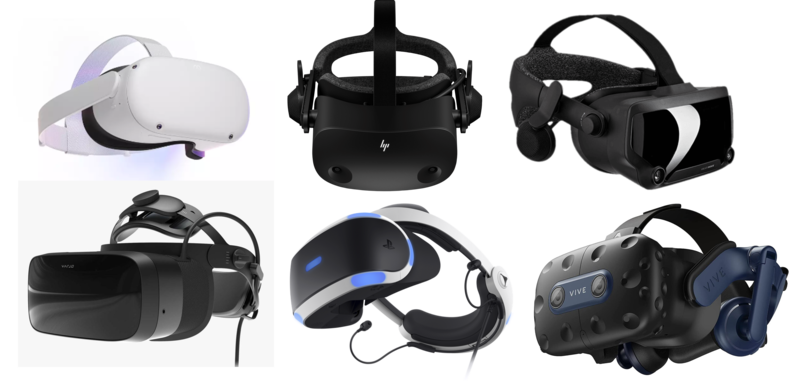
Some of the VR headsets currently on the market include (clockwise from upper left) Meta Quest, HP Reverb G2, Valve Index, HTC Vive, Sony PlayStation® VR, and the Varjo Aero. (Images © of their respective manufacturers)
Preview of Coming Attractions
Meanwhile, many in the industry are already looking ahead to 2023. Some of the big VR device releases the marketplace is hoping to see include:
- Meta’s next headset, the Quest 3 – following up on the Meta Quest Pro (released in Q3 2022), which was aimed at the enterprise market. Read more…
- Lenovo ThinkReality VRX – positioned as “a VR solution for workers everywhere.” Read more…
- The Pico 4 stand-alone VR headset has already been released in Europe and some parts of Asia, but North American users will have to hope for 2023 availability. Read more…
- Sony PlayStation VR2 – the new headset is designed to work with the PlayStation 5 (PS5) console, announced for release on February 22. Read more…
- And no list of anticipated devices would be complete without Apple’s long-awaited headset. Rumors abound that it could be VR and/or MR and will start production in March 2023. Read more…
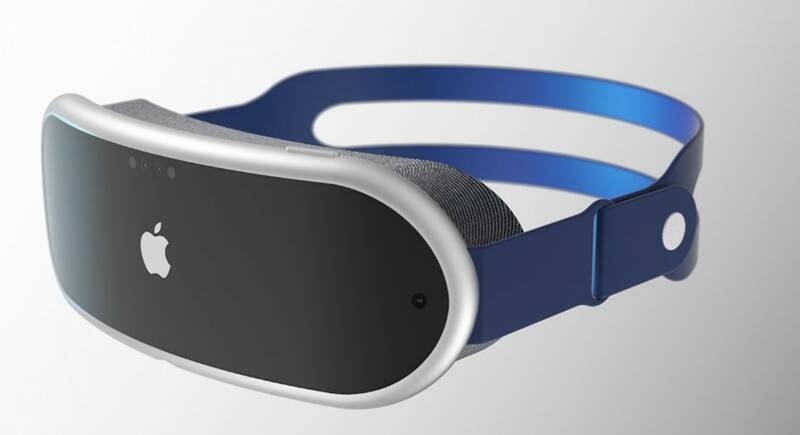
Unofficial rendering of the Apple AR/VR/MR headset (Image © Antonio De Rosa Design)
Ensuring the Quality of XR Devices
As the quantity and variety of headsets, goggles, smart glasses, and other near-eye displays (NEDs) proliferate, device designers and manufacturers must keep evolving product quality testing methods to keep pace. New optical structures, display technologies, and hardware designs require new measurement and inspection approaches to ensure that devices deliver the intended user experience.
Radiant was the first company to commercially release an AR/VR display imaging metrology solution to feature a lens design with the optical entrance pupil (aperture) at the front. This design allows the test system to be positioned within a headset to replicate the pupil position of the human eye. Applying wide-field-of-view (WFOV) optics, the AR/VR Lens solution can image the entire immersive display field of view (FOV) to evaluate all visual qualities as viewed from the user’s perspective.
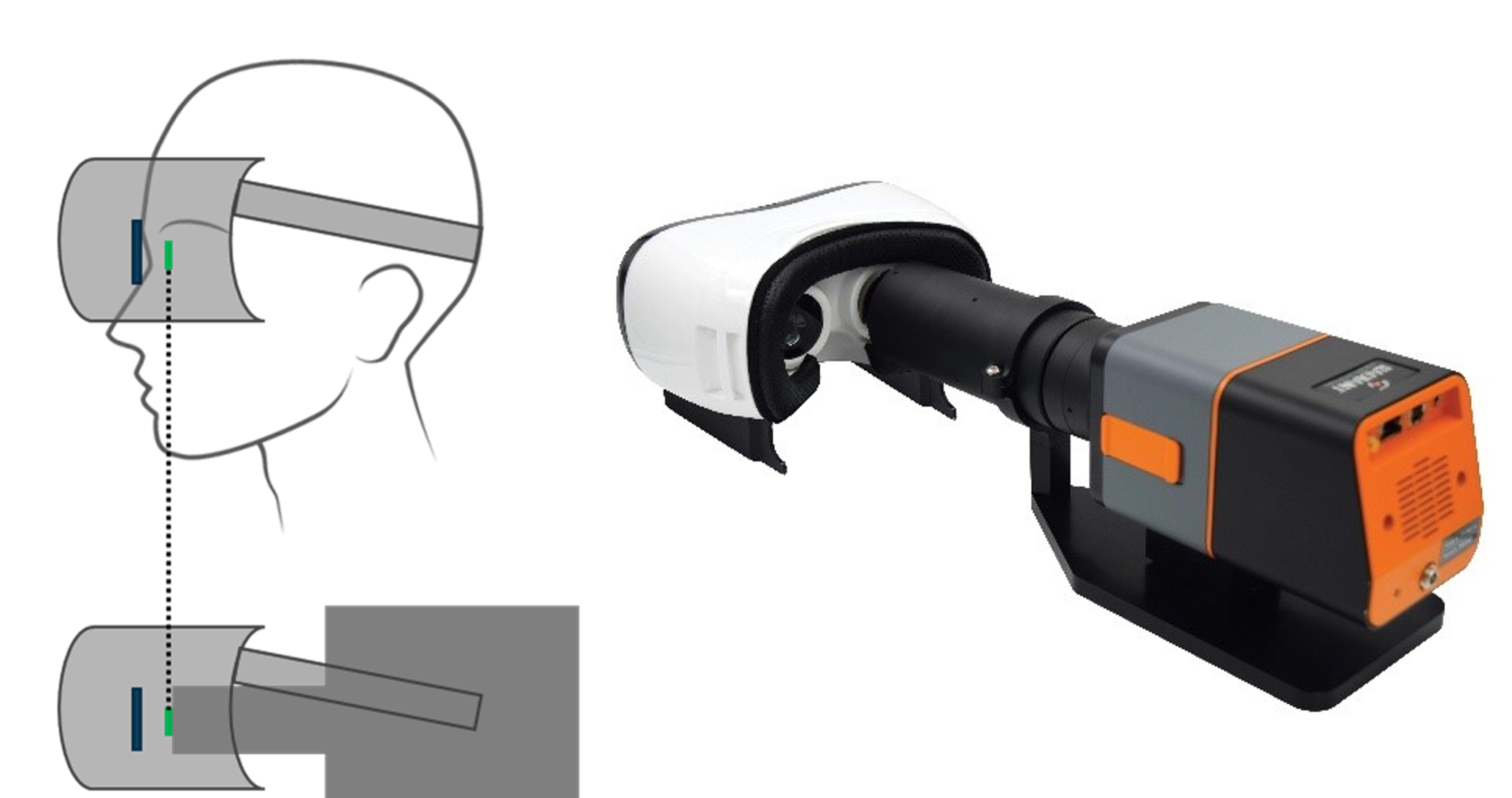
The entrance pupil of Radiant’s AR/VR Lens matches the size and position of the human pupil in a headset (left). The AR/VR Lens (right).
As new NED designs and optical structures continue to emerge, we have continued to evolve our XR measurement and testing solutions to meet the needs of XR developers and manufacturers. Our patent-pending XRE Lens incorporates a unique internal-focus mechanism with electronic control to instantly adjust the focus of the connected imaging system to multiple focal planes. Used with a ProMetric® imaging colorimeter or photometer and the TT-ARVR™ module of our TrueTest™ Software, the XRE Lens can be used to measure XR displays across a broad range of devices and visual performance criteria.
Developers can measure brightness (luminance), chromaticity (color), contrast, clarity, and uniformity of the images displayed in AR/MR headsets. The unique design of the XRE lens enables it to match the position, field of view, and visual perception of the human eye.
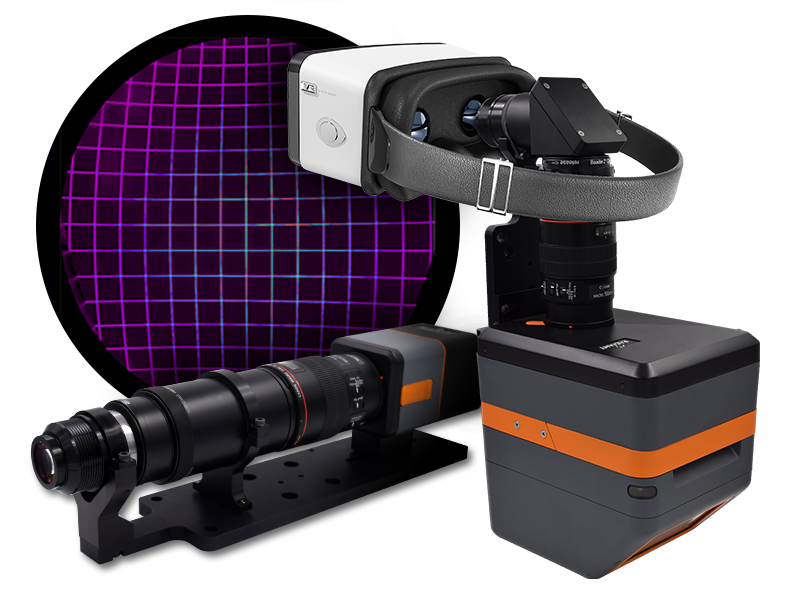
Radiant’s TT-ARVR Software showing distortion grid test taken with our XRE Lens (back), and the XRE Lens shown in straight (non-folded) configuration with a ProMetric® Y Imaging Photometer (front left) and in folded (periscope) configuration with a ProMetric I Imaging Colorimeter (right).
To learn more about the unique challenges of measuring AR/VR/MR displays and hear about device quality and testing considerations, watch this webinar from Engineering360 (GlobalSpec) featuring Radiant's Optics Development Manager, Eric Eisenberg: Replicating Human Vision for XR Display Testing: A Flexible Optical Solution for In-Headset Measurement. In it he discusses:
- Visualization parameters and quality considerations in AR/VR/MR devices
- Test & measurement systems that emulate the human eye in headsets
- Measurement challenges posed by new XR device designs and capabilities
- New flexible measurement optics that simplify display testing across device designs, optics, and architectures.
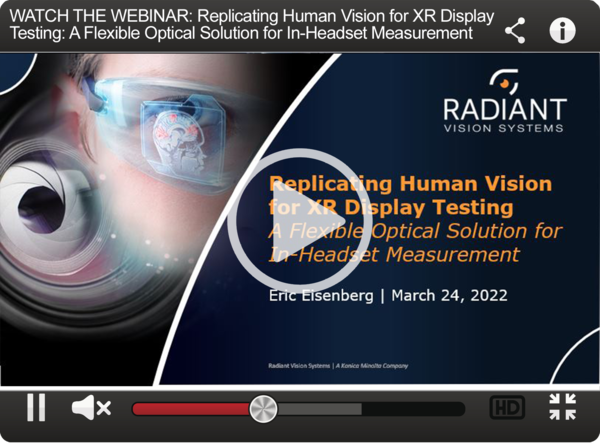
CITATIONS
- Virtual Reality Market Size, Share & COVID-19 Impact Analysis…Forecast 2022-2029, Fortune Business Insights, May 2022.
- Singh, K., “The Growing List of XR Devices,” Medium, May 30, 2020, updated November 2021.
- Vuzix Shield, Vuzix.com website. (Accessed November 22, 2022)
Join Mailing List
Stay up to date on our latest products, blog content, and events.
Join our Mailing List
